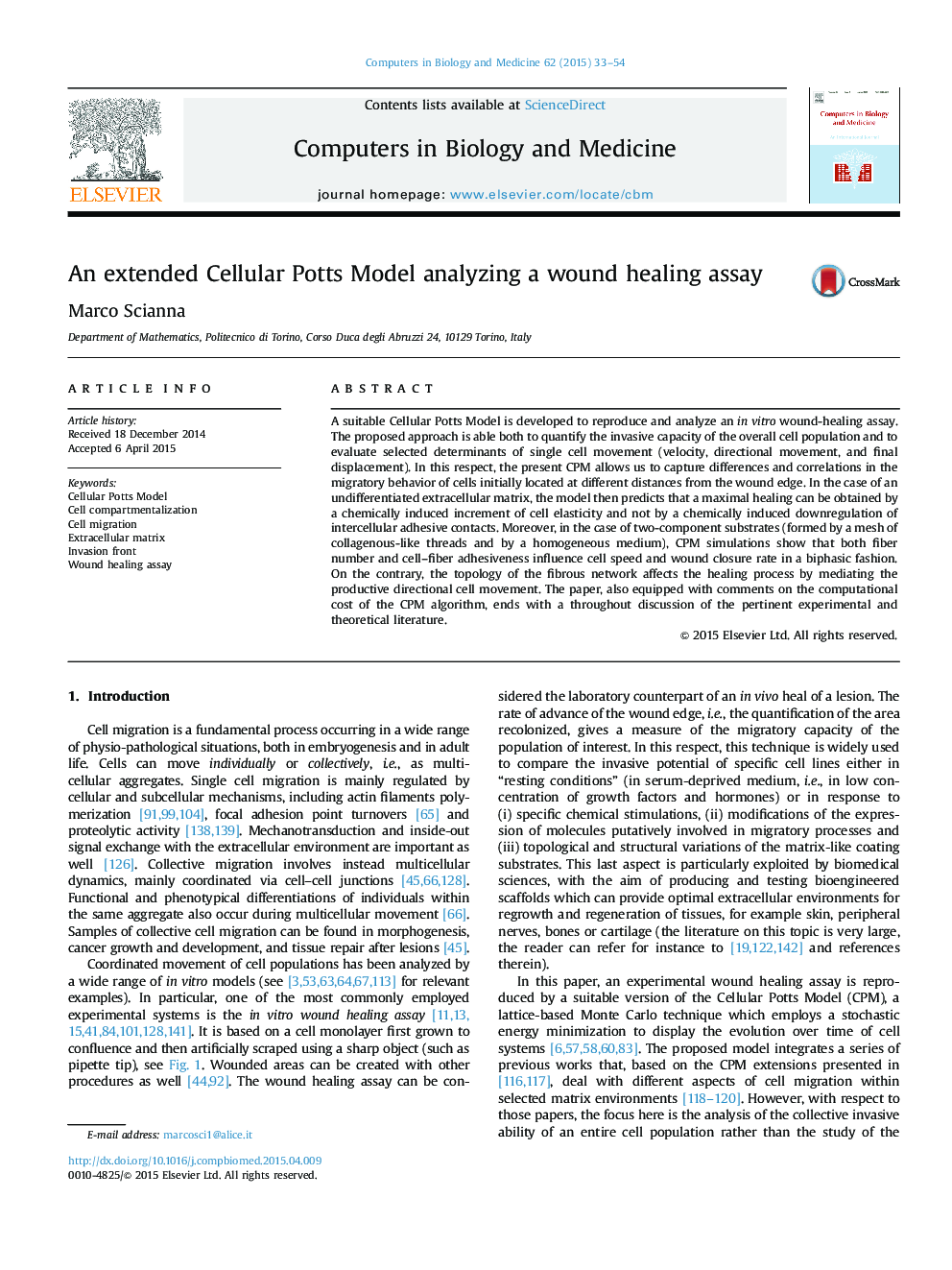| Article ID | Journal | Published Year | Pages | File Type |
|---|---|---|---|---|
| 6921229 | Computers in Biology and Medicine | 2015 | 23 Pages |
Abstract
A suitable Cellular Potts Model is developed to reproduce and analyze an in vitro wound-healing assay. The proposed approach is able both to quantify the invasive capacity of the overall cell population and to evaluate selected determinants of single cell movement (velocity, directional movement, and final displacement). In this respect, the present CPM allows us to capture differences and correlations in the migratory behavior of cells initially located at different distances from the wound edge. In the case of an undifferentiated extracellular matrix, the model then predicts that a maximal healing can be obtained by a chemically induced increment of cell elasticity and not by a chemically induced downregulation of intercellular adhesive contacts. Moreover, in the case of two-component substrates (formed by a mesh of collagenous-like threads and by a homogeneous medium), CPM simulations show that both fiber number and cell-fiber adhesiveness influence cell speed and wound closure rate in a biphasic fashion. On the contrary, the topology of the fibrous network affects the healing process by mediating the productive directional cell movement. The paper, also equipped with comments on the computational cost of the CPM algorithm, ends with a throughout discussion of the pertinent experimental and theoretical literature.
Keywords
Related Topics
Physical Sciences and Engineering
Computer Science
Computer Science Applications
Authors
Marco Scianna,
